The world of interior design comes alive when floor transitions are thoughtfully planned and executed. Floor transitions connect spaces seamlessly, transforming walkways into artful expressions of style and function. With 22 creative floor transition ideas at your fingertips, you can blend different aesthetics and materials with confidence, resulting in spaces that feel harmonious and innovative. Every design decision is a step toward a more engaging living or work environment, inspiring you to experiment with textures, colors, and patterns. Let these innovative floor transition ideas spark your creativity and encourage you to explore new design horizons.
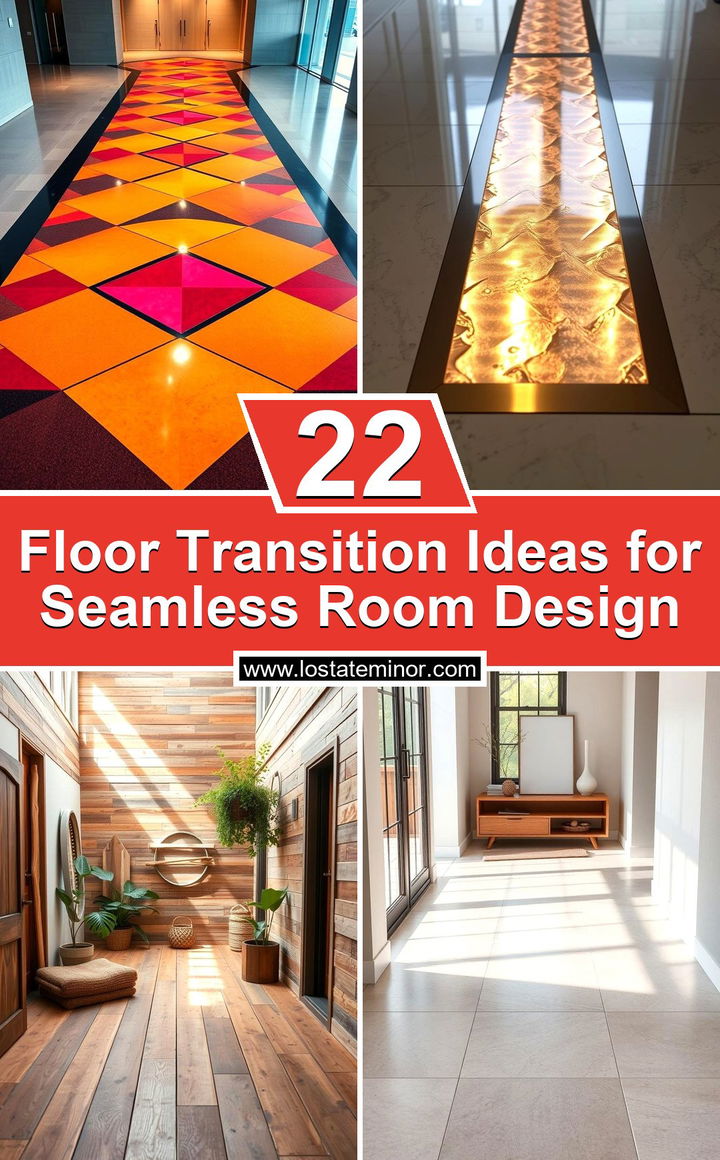
1. Seamless Color Blending
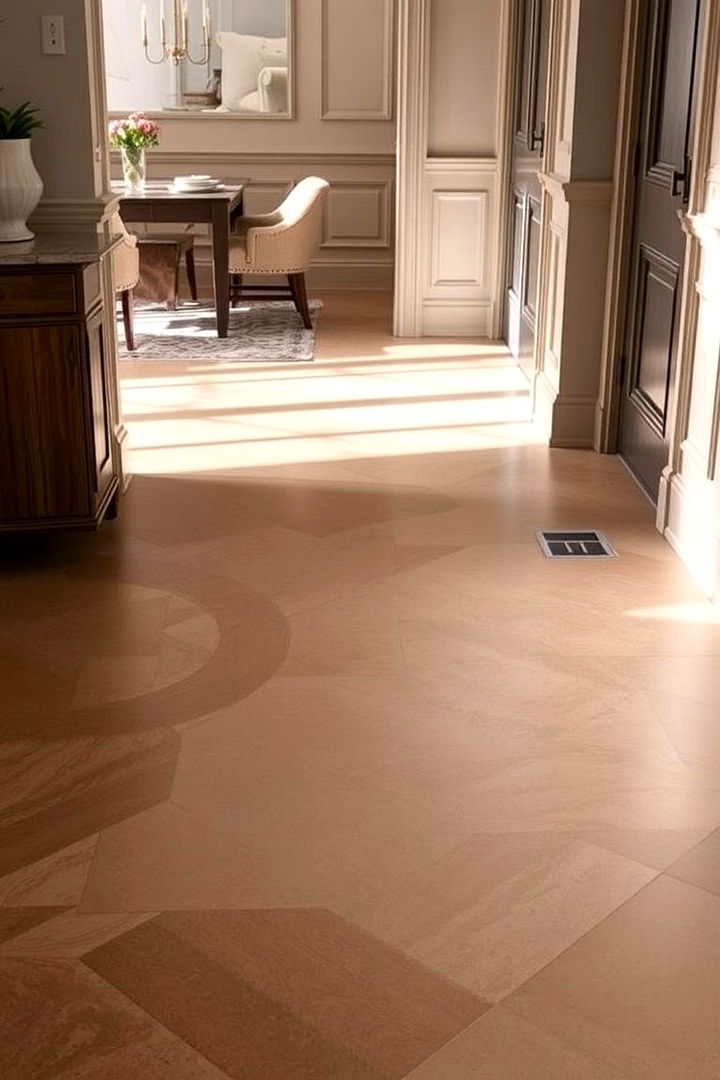
A vibrant gradient of colors creates a captivating flow from one room to the next. This idea involves carefully selecting hues that gradually shift, ensuring the eye moves naturally along the floor. The key benefit here is a unified aesthetic that ties diverse spaces together. Perfect for modern homes or commercial spaces, this approach uses subtle tonal shifts to prevent abrupt changes. The technique encourages creativity and adds a sense of continuity, allowing each area to maintain its identity while achieving overall harmony across your interior.
2. Consistent Material Aesthetics
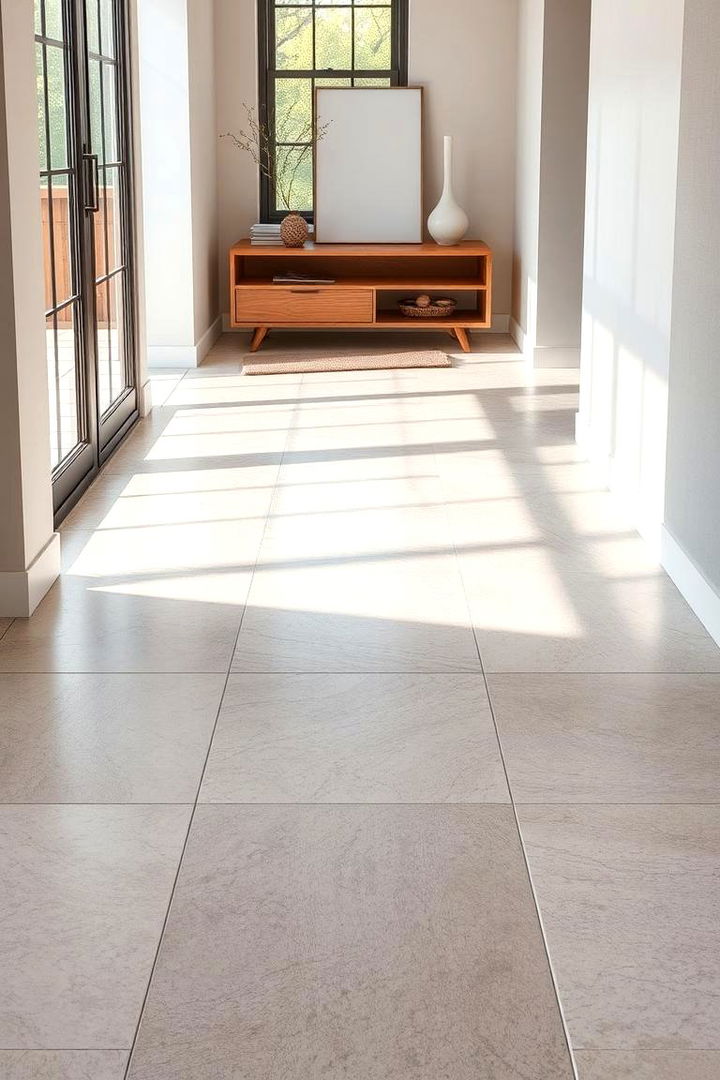
With natural elegance, a consistent choice of materials promotes a visually coherent look in interior design. This transition idea involves using the same flooring textures in adjoining areas, which emphasizes continuity and minimizes disruption. The benefit is a smooth, uninterrupted visual flow that enhances spaciousness. Homeowners and designers alike appreciate the simplicity and elegance provided by this strategy. It creates a familiar yet dynamic interaction across areas, allowing each room to feel complete. Embrace consistency to achieve a calm, balanced atmosphere that adapts effortlessly to various decor styles.
3. Bold Border Design
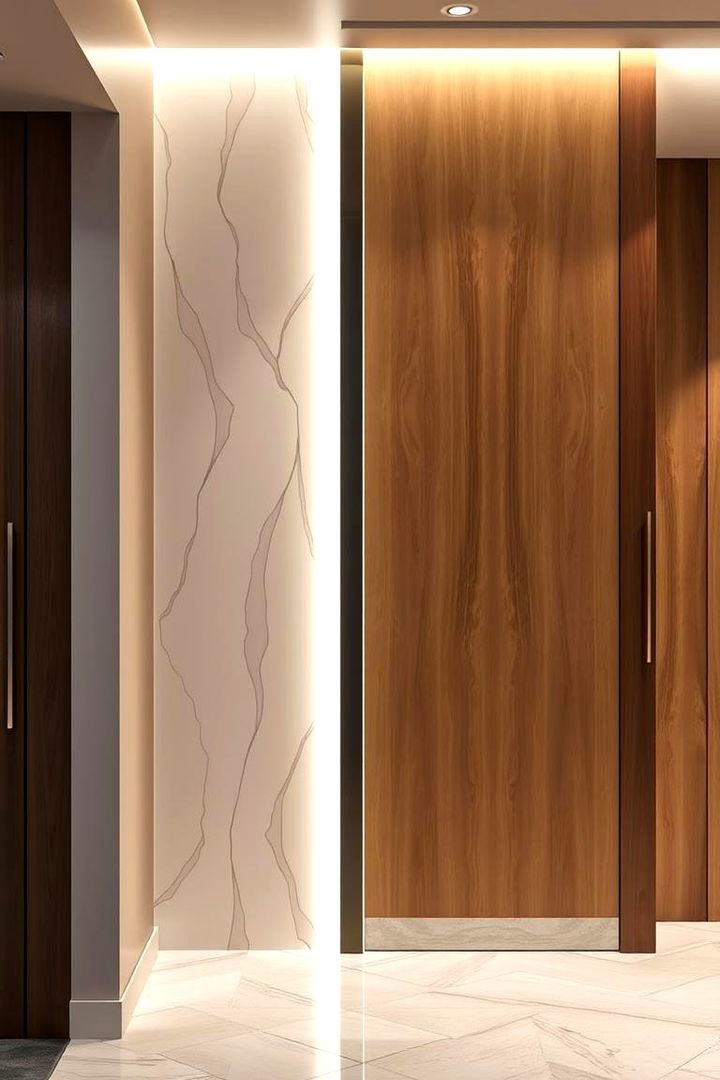
Imagine a striking border that clearly defines space while celebrating contrast. This method uses a noticeable strip, in a different finish or color, to mark transition boundaries between floors. It not only highlights the individual character of each area but also brings an element of drama to any space. The bold border creates sharp visual interest and a clear separation without interrupting the overall aesthetic. This technique works well in both modern and traditional settings, paving the way for a tailored and purposeful design statement that elevates everyday interiors.
4. Transition with Rugs and Mats
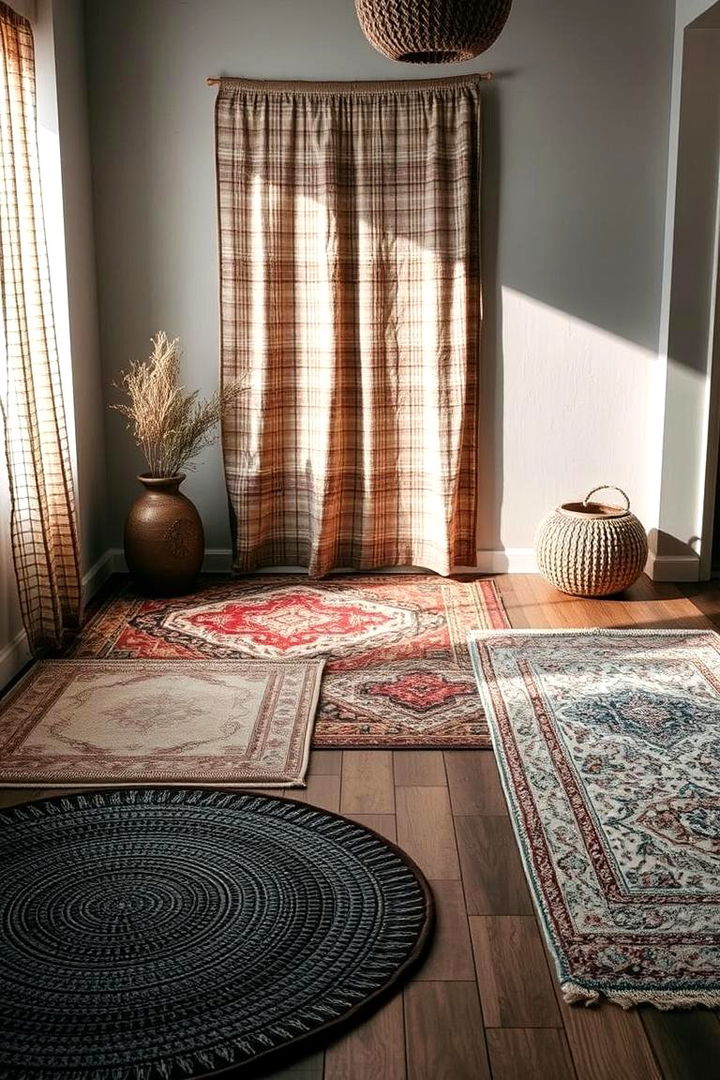
A cozy, inviting area defined by strategically placed rugs or mats can enhance floor transitions effortlessly. This idea employs layered textural elements that blend distinct surfaces while adding warmth and softness to your space. The key benefit is the ability to introduce color and pattern variations that celebrate individuality while maintaining flow. Rugs and mats provide flexibility and comfort, making them ideal for high traffic areas. Their versatility permits seasonal updates or style changes, ensuring that your interiors continuously inspire a welcoming and relaxed atmosphere.
5. Mixed Material Harmony
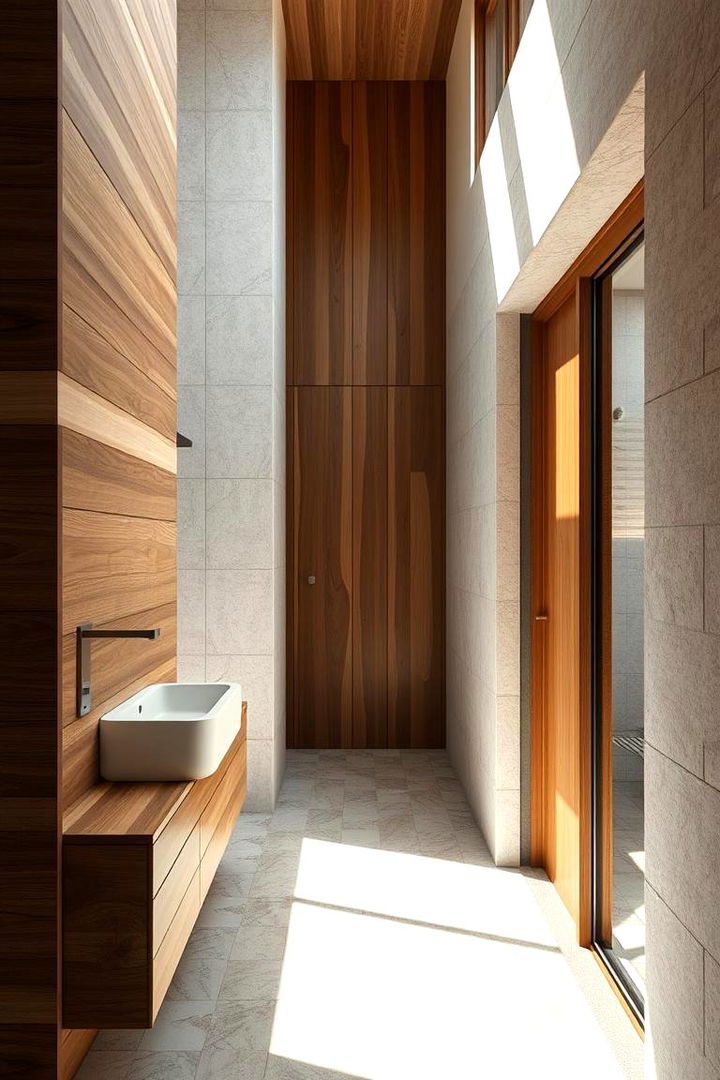
Embracing mixed materials offers an innovative twist to traditional floor transitions. In this approach, designers pair contrasting finishes such as wood, tile, or stone, creating an artistic yet balanced effect. The advantage lies in the narrative that unfolds as textures and patterns engage in dialogue; each material highlights its own charm while enhancing adjacent surfaces. This technique compels viewers to appreciate design intricacies, adding layers of interest and sophistication. It’s a creative yet practical solution that seamlessly links varied environments while making a unique, personalized style statement.
6. Textured Transition Strips
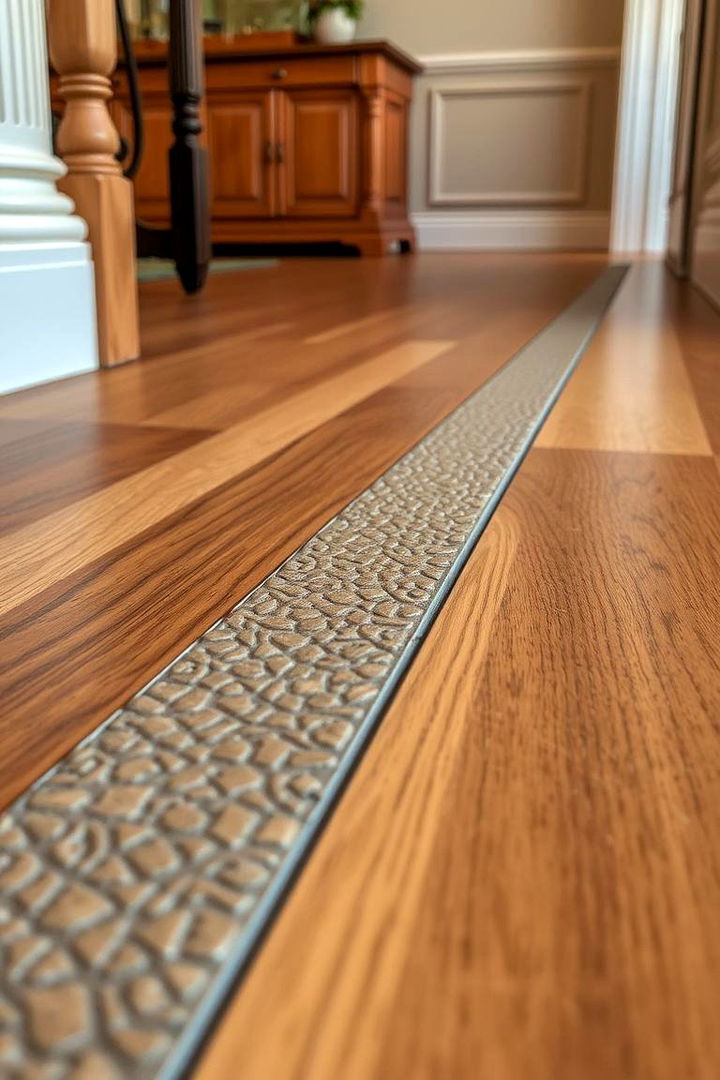
A textured transition strip serves as both a functional and decorative bridge between floors. This design concept emphasizes subtle or bold texture differences to unify spaces, subtly guiding your steps from one surface to another. The practicality of this approach lies in its ability to disguise uneven surfaces and protect edges, while the decorative element adds visual flair. Homeowners benefit from improved safety features without sacrificing style, creating a seamless blend of aesthetics and functionality. This clever touch is perfect for busy households and commercial environments alike, where form meets function.
7. Geometric Patterns
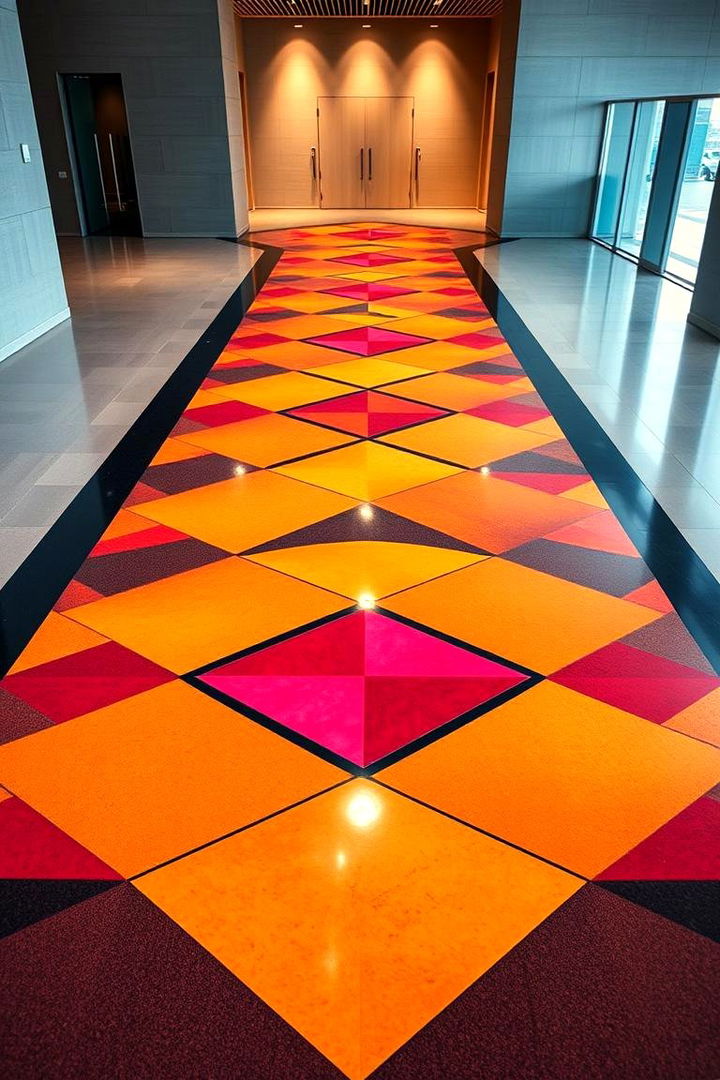
Envision boldly defined geometric patterns that energize your transition space. By integrating sharp, linear, or curved designs between flooring materials, you can infuse a modern artistic edge into your home. This approach creates a dynamic dialogue between structure and creativity, providing a striking visual demarcation while encouraging playful interpretation of space. The inherent benefit is the balance between order and innovation, helping break monotony and offering a refined, contemporary look. Such precision and creativity establish distinct areas without the need for additional physical boundaries.
8. Natural Stone Transitions
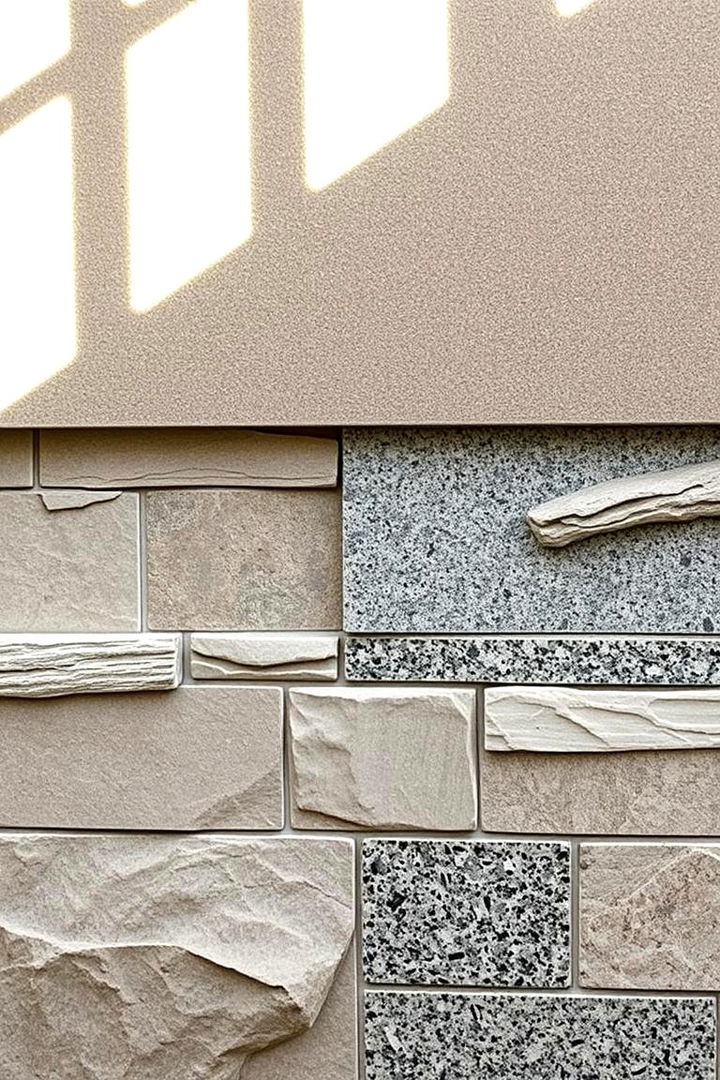
Imagine the enduring beauty of natural stone guiding the way between different floor types. This idea centers on using geological textures like slate, granite, or travertine to mark transitions. The key benefit is a robust and timeless aesthetic that conveys an organic and earthy feel, connecting indoor and outdoor elements effortlessly. This approach works well in settings where durability meets design, creating imbedded pathways that elevate spaces with natural elegance. The refined texture and inherent patterns provide an exquisite connection between varied flooring materials, inviting admiration from every guest.
9. Elegant Wood Transitions
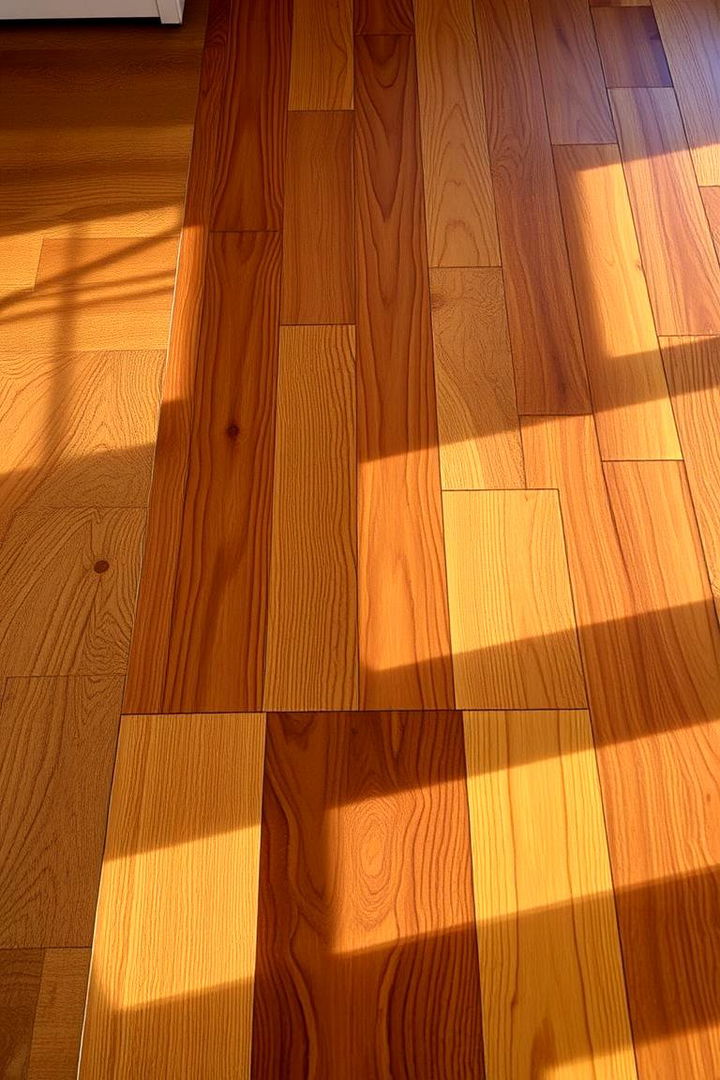
A graceful wooden transition brings a warm, inviting feel to your interiors. This approach uses wood accents or specially crafted thresholds to bridge diverse flooring types, showcasing the natural beauty of timber. The benefits include durability, timeless appeal, and the versatility to complement various decor styles. Wooden transitions create a smooth glide from room to room, adding a touch of organic charm to modern or traditional spaces alike. The rich textures and natural grain patterns inspire comfort and visual continuity, making every step feel grounded in nature’s warmth.
10. Modern Tile Borders
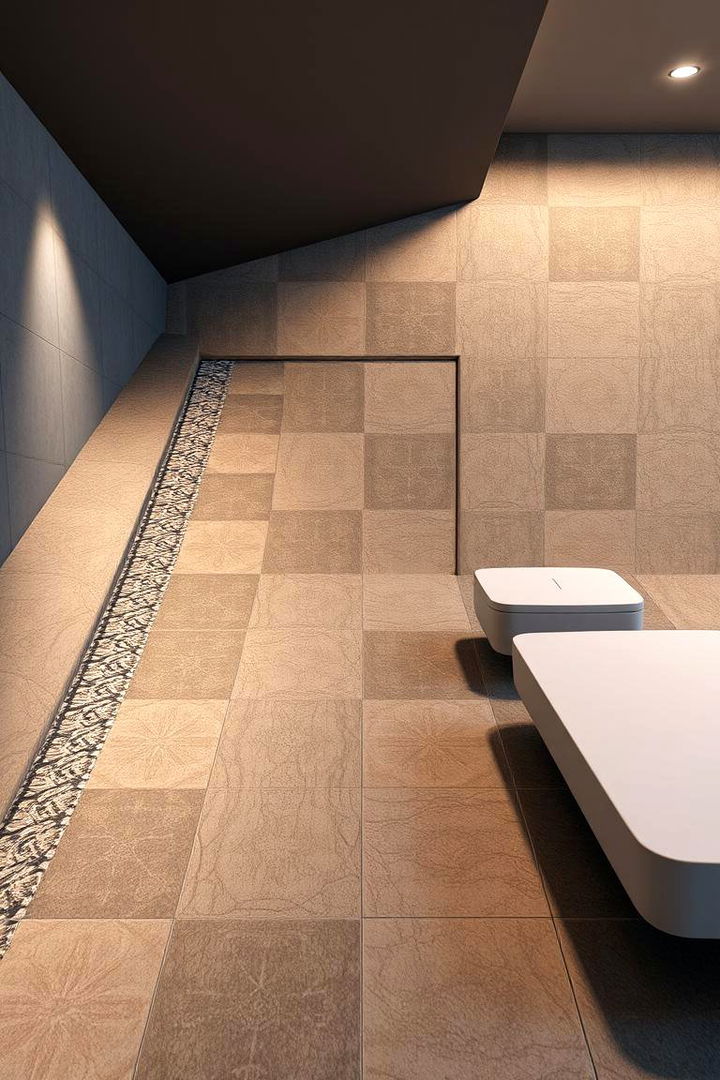
A carefully placed modern tile border can sharpen and define interior spaces with a chic aesthetic. This idea consists of choosing contrasting tiles with unique patterns to mark the division between floors. The practical advantage lies in its durability and ease of cleaning while offering a stylish twist. It’s a perfect solution for busy areas needing a visual break between distinct zones. Furthermore, this approach allows for customization, making each transition both a design statement and a practical boundary that enhances overall architectural flow in a contemporary setting.
11. Underfloor Heating Integration
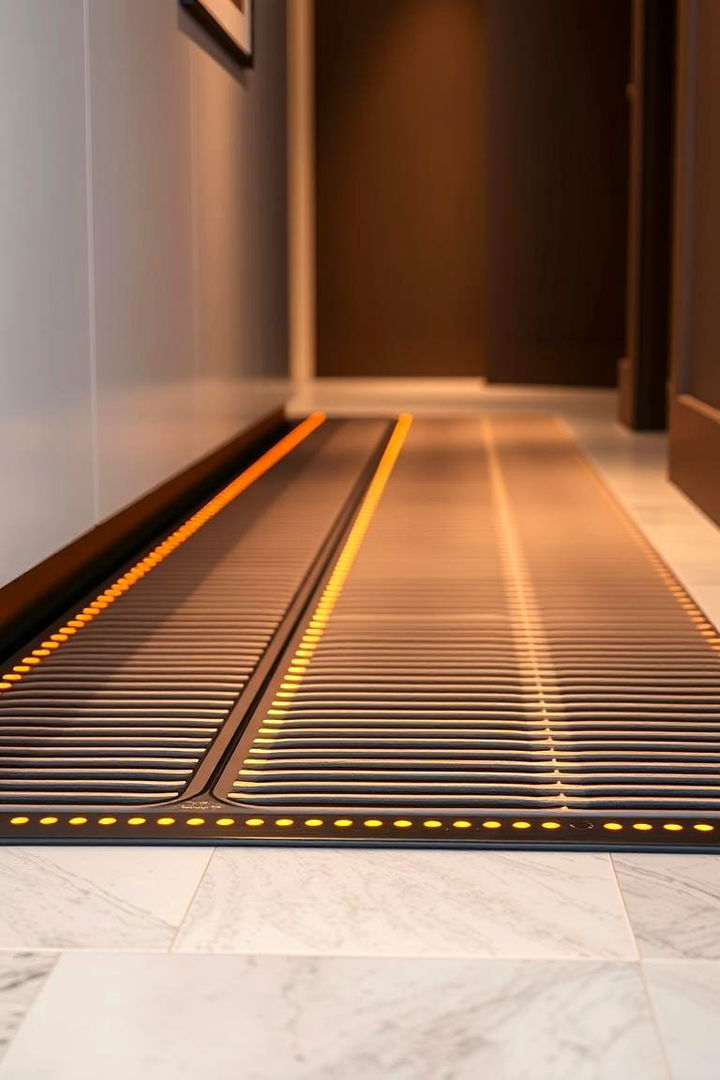
Integrating underfloor heating systems into floor transitions is a brilliant idea for enhancing comfort and design. This concept combines functionality with style by offering discreet heating elements set beneath seamless surface transitions. The key benefit is the efficient warmth distribution without visible disruption to the flooring aesthetic. It elevates both utility and elegance, making every step comfortable and inviting. This approach is particularly advantageous in colder climates, where energy efficiency and sleek design intersect to provide a cozy, contemporary environment that uplifts the overall living experience.
12. Minimalist Thresholds

A minimalist threshold design embraces the philosophy of less is more while ensuring a smooth transition between floors. This idea focuses on discreet, subtle transitions that avoid overwhelming the space, making the shift from one area to another almost unnoticeable. The primary advantage is its contribution to an uncluttered aesthetic that enhances modern living. With neutral colors and understated details, this design strategy provides a sense of openness and balance. Ideal for small or open-plan designs, minimalist thresholds maintain the integrity of each space while perfectly blending functionality with refined simplicity.
13. Sustainable Flooring Transitions
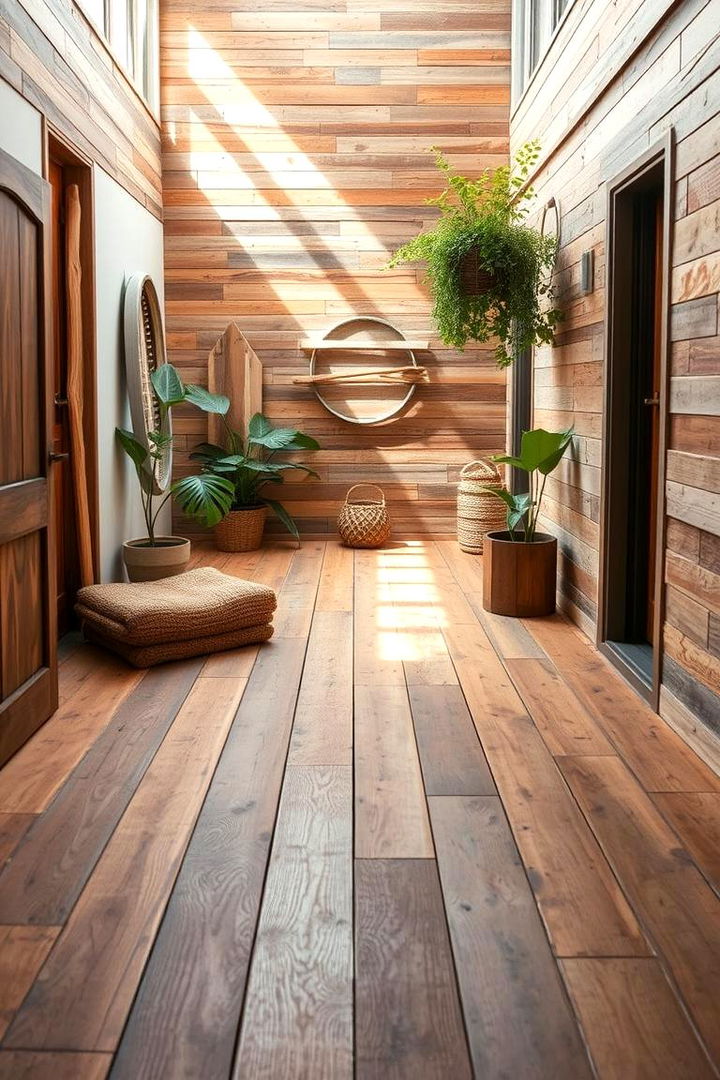
Emphasizing eco-friendly solutions, sustainable flooring transitions incorporate recycled or responsibly sourced materials to create harmony between spaces. This idea benefits both the environment and your interior design, offering a distinctive look that champions green living. The use of reclaimed wood or eco-friendly composites provides durability and style simultaneously. The advantage here lies in the strong narrative of environmental responsibility combined with aesthetic appeal. By weaving sustainability into your design, you achieve a functional border that speaks of innovation, care for nature, and a commitment to future-proofing your space while retaining charm.
14. Contrast and Cohesion
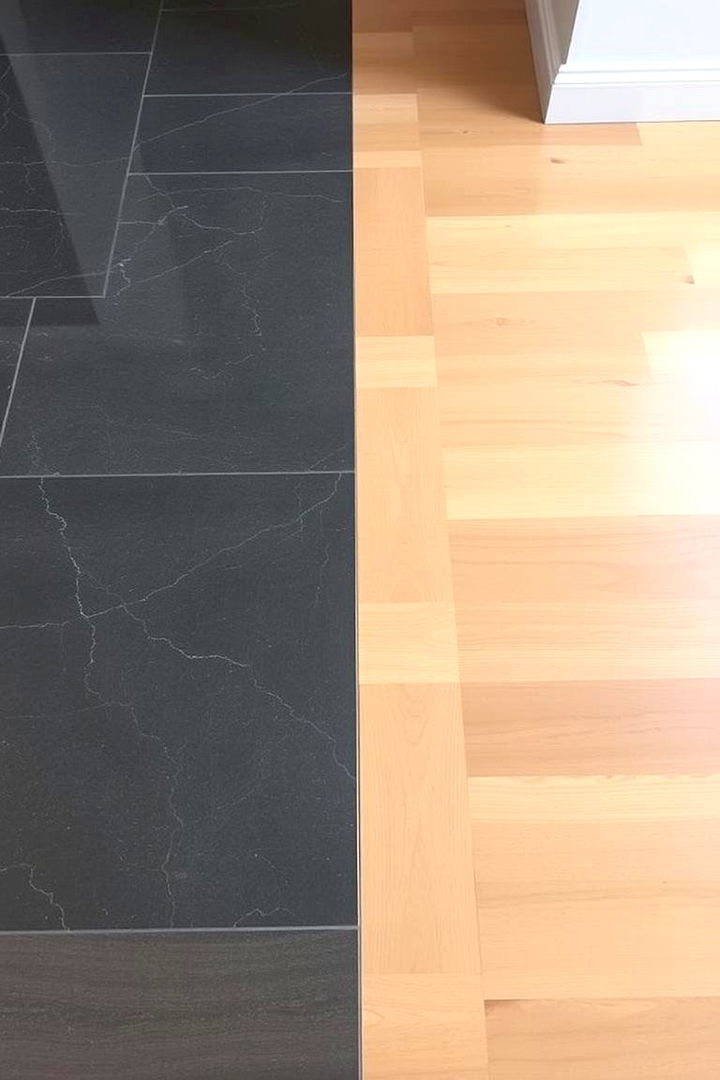
A clever play of contrast and cohesion elevates floor transitions into an art form. This idea involves selecting materials that engage in a dialogue of opposites—like pairing dark stone with bright hardwood—creating a striking yet unified appearance. The benefit is a dynamic spatial experience that emphasizes both separation and connection. This dual approach allows each floor area to maintain its distinct personality while contributing to an overall coherent design. The technique is highly versatile, lending itself to creative experimentation that can refresh a space and inspire innovative interior layouts without sacrificing practicality.
15. Gloss and Matte Finishes
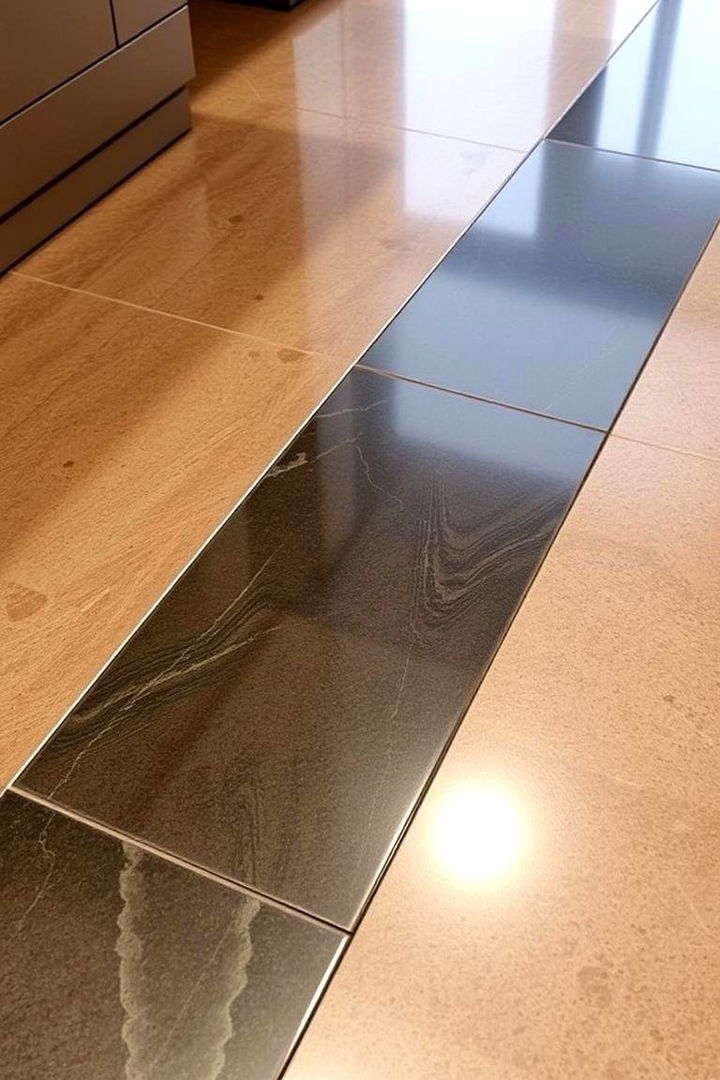
A mix of gloss and matte finishes offers a sophisticated method to define floor transitions. By combining surfaces with contrasting sheens, you can create visual depth and interest that subtly guide movement between areas. The practical benefit of this design lies in the interplay of light and texture, which can brighten or mellow spaces accordingly. The juxtaposition of finishes not only enhances the overall aesthetic but also allows for creativity in achieving an interior style that is both modern and inviting. This balance creates an engaging sensory experience that highlights the unique character of each room.
16. Radiant Metallic Inlays
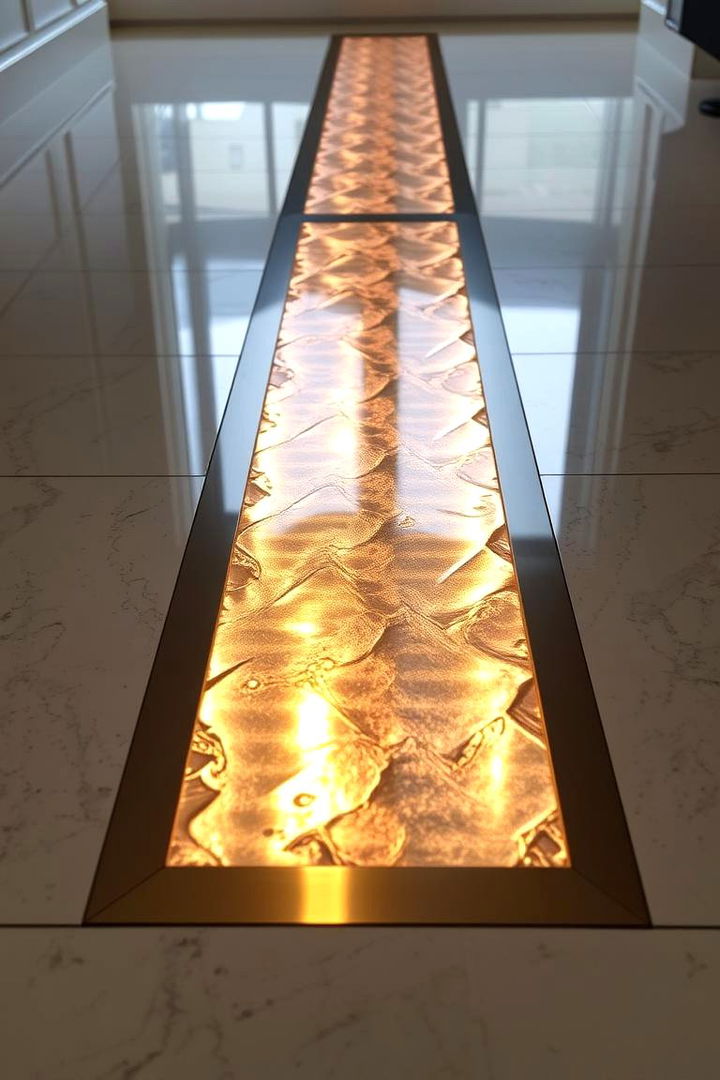
A radiant touch of metallic inlays creates an eye-catching floor transition that sparkles under ambient lighting. This design concept involves embedding strips of metal such as brass or silver into the threshold area, adding a refined yet modern twist. Its main benefit is the infusion of subtle luxury into otherwise plain spaces. The reflective surfaces elevate the lighting and ambiance, creating a sense of motion and continuity. Ideal for chic, contemporary interiors, metallic inlays blend functionality with art, serving as a deliberate design statement that marries durability with the elegance of modern materials.
17. Customizable Transition Strips
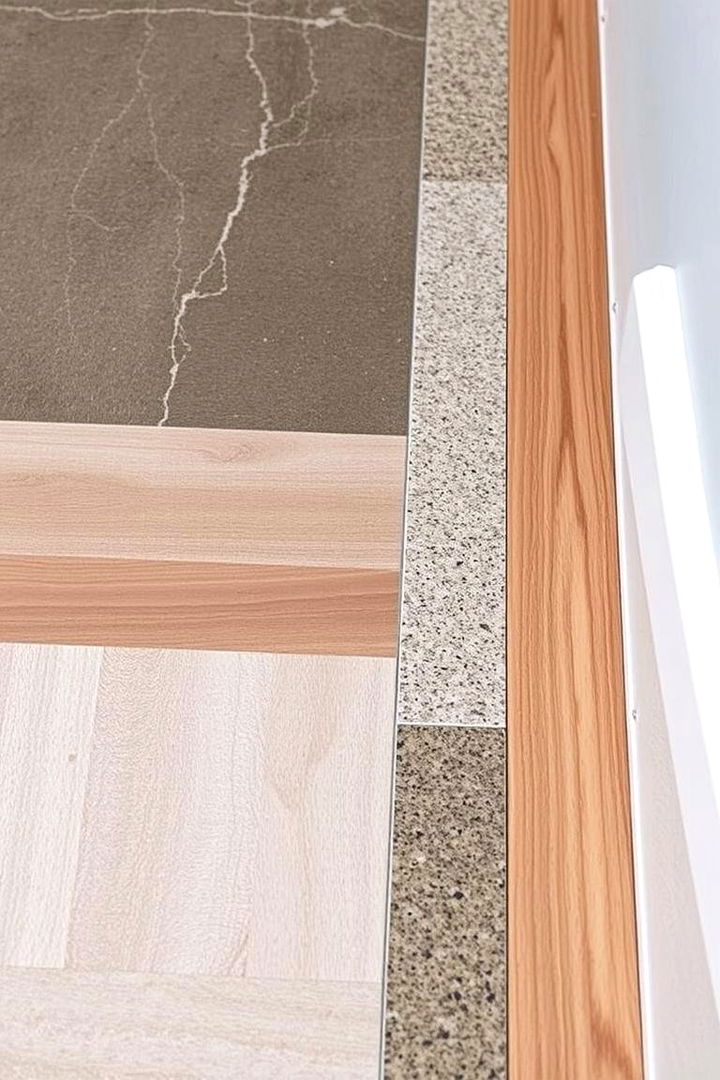
Tailoring transition strips to meet your specific design needs can redefine your interior’s personality. This idea centers on custom-designed strips that accommodate a variety of materials, finishes, and dimensions to suit both vibrant and subdued aesthetics. The advantage is flexibility; you can adapt these strips to bridge different surfaces while enhancing both beauty and practicality. Customizable transition strips offer a perfect blend of style and functionality, ensuring every edge is meticulously handled. This creative freedom allows homeowners to experiment without constraints, ensuring that every detail contributes to a harmonious overall design.
18. Floating Transition Panels
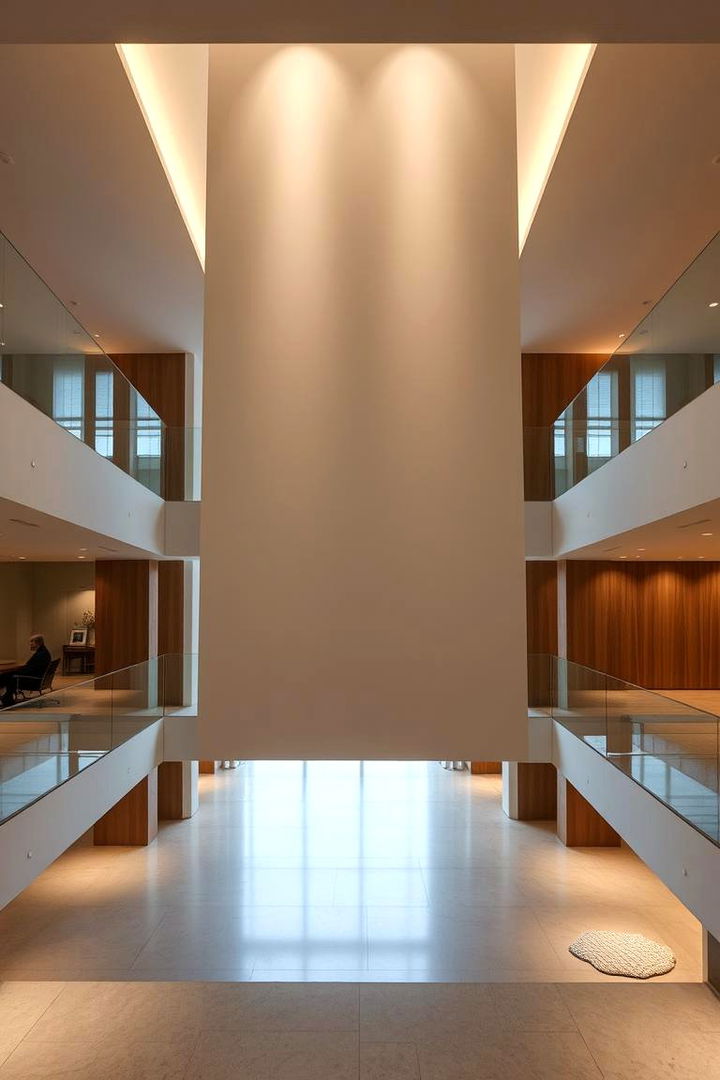
Floating transition panels offer a contemporary and innovative way to separate floors with a touch of magic. This design concept uses panels that appear to hover between different surfaces, creating a visually stunning and unique demarcation. The primary benefit is a modern aesthetic that adds depth and dimension to the room. These panels, often illuminated subtly or finished with sleek materials, provide an airy break that enhances spatial continuity. The effect is both practical and artistic, making the floor transition seem effortless while establishing a focal point that delights and surprises guests.
19. Hidden Transitions

A nearly invisible or hidden transition seamlessly blends different flooring types into a unified look. This design idea focuses on precision cutting and expert joining techniques that render the division nearly imperceptible while maintaining structural soundness. The benefit is a clean, uncluttered aesthetic that emphasizes design unity and carefully orchestrated detail. With hidden transitions, your space exudes sophistication and technical mastery, leaving a lasting impression on visitors. This discreet approach champions a modern interior style that values subtlety, ensuring that the beauty of each flooring type shines through in a fluid and cohesive manner.
20. Tactile Accent Strips
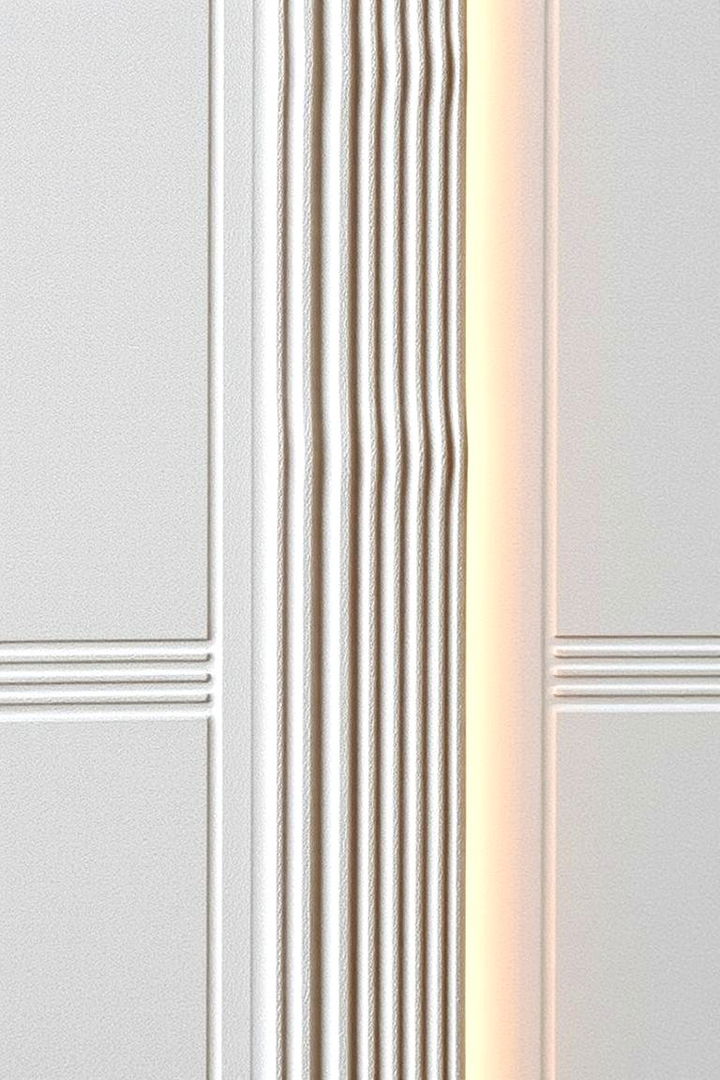
Tactile accent strips introduce an engaging sensory dimension to floor transitions. The idea revolves around using raised or grooved strips that are both decorative and functional, guiding footsteps and offering visual texture contrast. The main benefit is the added safety and a distinct touch of personality that enhances floor aesthetics. This design approach marries form and function, creating transitions that invite touch while delineating various spaces. The interplay of patterns and textures results in a dynamic, unforgettable impression, ensuring that every step is a small journey of discovery and refined design.
21. Seamless Expansion Joints
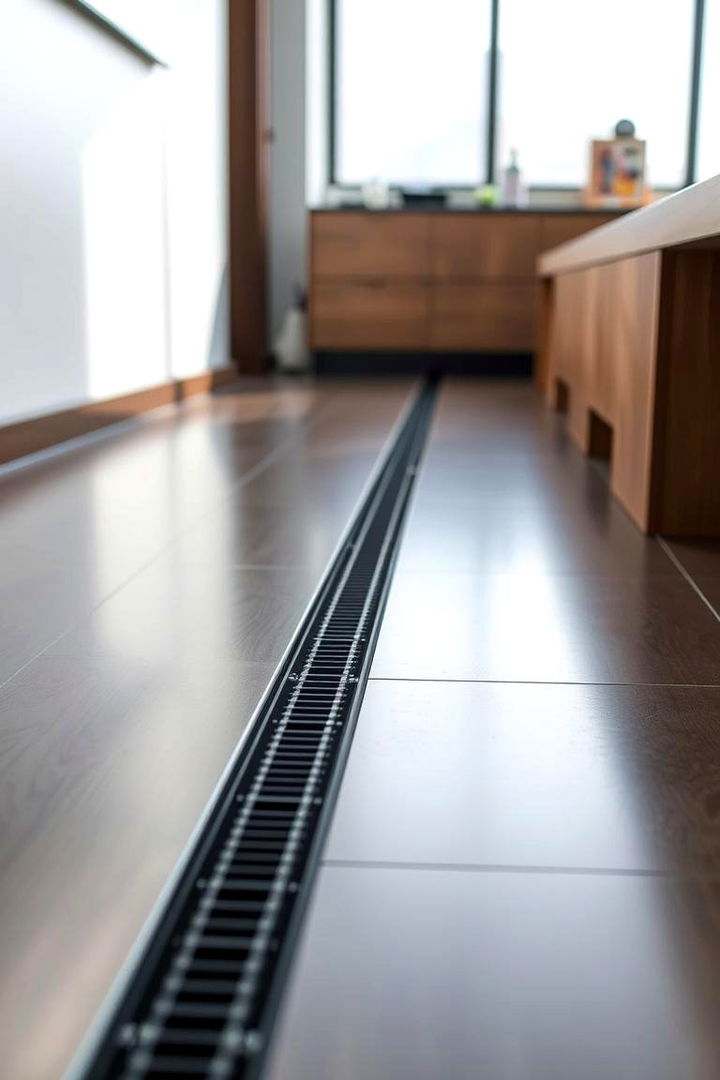
Seamless expansion joints offer a practical yet innovative solution to managing floor movement while maintaining a polished look. This concept incorporates flexible, almost invisible joints that allow materials to expand or contract without compromising design. The key benefit includes improved durability and a sustained aesthetic, especially in large or multifunctional spaces. This method combines engineering precision with modern design, ensuring safety and style. With expansion joints thoughtfully integrated, every area respects both the physical realities of material behavior and the visual appeal, resulting in a fluid and resilient seamless transition throughout your space.
22. Artistic Mosaic Borders
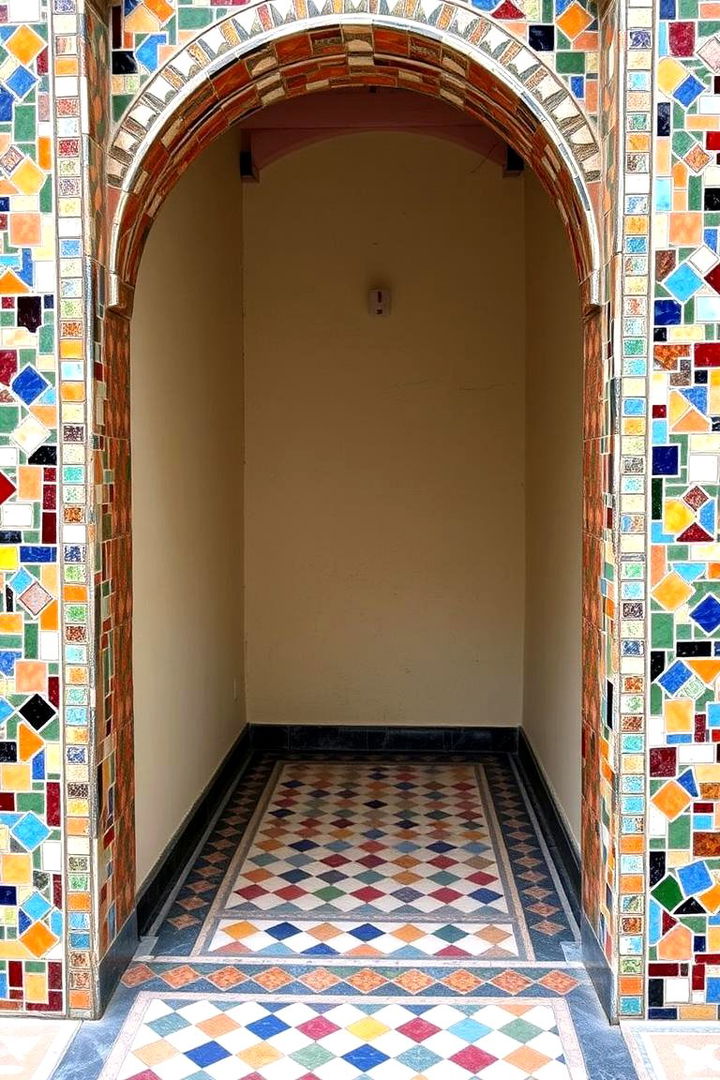
Artistic mosaic borders turn floor transitions into a creative canvas that celebrates intricate design details. Using a medley of colored tiles arranged in artistic patterns, this idea adds a distinctive flair to every step between rooms. The benefit is twofold: it serves as both a decorative highlight and a functional boundary that adapts to various themes. This technique inspires a sense of craftsmanship and personal expression, inviting exploration of cultural influences and modern artistry. Each mosaic border becomes a narrative element that enhances the overall interior design, making transitions a focal point of beauty and innovation.
Conclusion:
Floor transition ideas are essential to crafting a home that is both beautiful and practical. Each concept, from seamless color blending to artistic mosaic borders, provides unique benefits that elevate interior spaces while maintaining a balanced flow. By thoughtfully integrating these strategies, you not only enhance visual appeal but also improve functionality, ensuring every step is a testament to creativity and smart design. Embracing these ideas invites innovation and personalized style into your living or work areas while creating an environment that inspires comfort and confidence. Explore 22 Floor Transition Ideas and transform your space with a blend of artful design and practical functionality.
